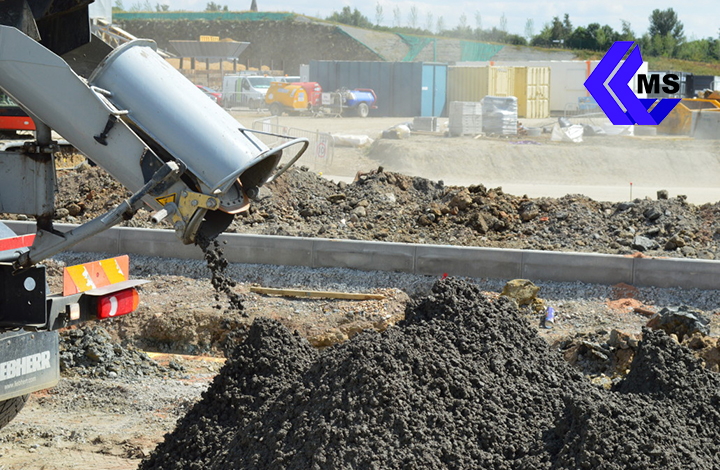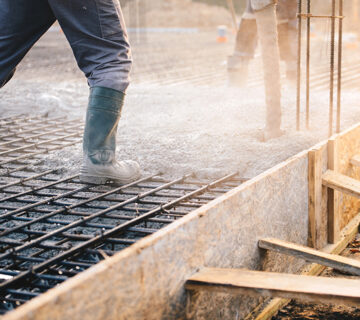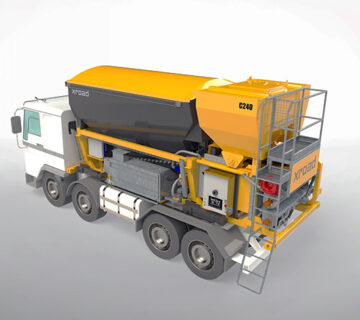Ready-mix concrete can be classified into different types according to its additives and is used in different residential and commercial sectors. But there is another classification for ready-mix concrete types that is considered according to environmental conditions and the volume of the project, and that is ready-mix concrete and dry ready-mix concrete. The main difference between these two types of concrete is the addition of water during their production process, and the ready-mix concrete factory produces one or both types of concrete according to the customer’s order.
Ready-mix concrete and dry ready-mix concrete have their own advantages and disadvantages that should be considered when ordering and using them. For example, the volume of concrete used, temperature conditions, distance of the project from the concrete production plant, and several other such things affect the choice of concrete, and contractors should consider these conditions carefully and then order ready-mix concrete. Therefore, given the importance of this issue, we will first introduce the two types of ready-mix concrete and dry ready-mix concrete, and while presenting the advantages of each of them, we will mention the appropriate conditions for using each. So stay with us!
What is dry ready-mix concrete? What is wet ready-mix concrete?
As mentioned in the definition of concrete, concrete is known as a composite material that is produced by combining sandstone, cement, water and chemical additives. The same definition can be applied to dry concrete, with the difference that water is not used in the composition of dry ready-mix concrete and the water is added at the final project site. In the ready-mix concrete factory, according to the customer’s order, a specific volume of each of the raw materials of the concrete is added and poured into the mixer after complete mixing. The mixer transports this mixture to the project site and delivers it to the customer as dry ready-mix concrete.
Wet ready-mix concrete is produced completely at the factory site and delivered to the customer in a ready-mixed state. In fact, when ordering, the customer is asked to specify the amount of clogging of the concrete and the amount of water required is determined. After mixing water with the concrete and mixing it completely, it is transported to the project site by the mixer. In this case, the customer receives ready-to-use wet concrete.
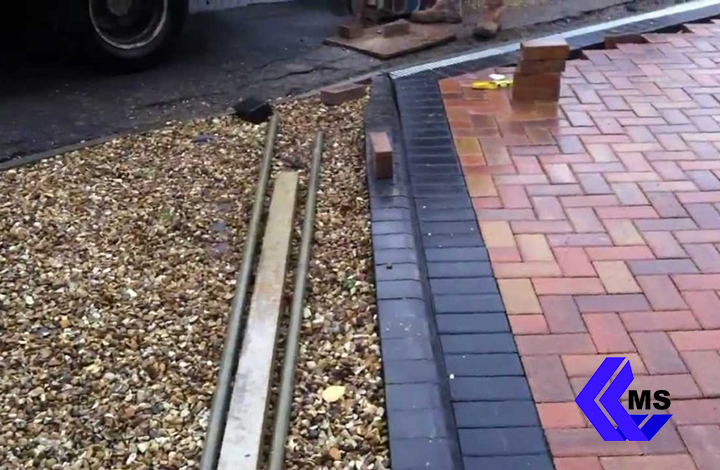
Advantages of using ready-mixed concrete
Reduction in project time: The biggest reason for using ready-mixed concrete is to reduce the construction time of the project, which can benefit the contractor in many ways. Ready-mixed concrete does not require additional work and will not waste much time.
Reduction in costs: When a contractor orders ready-mixed concrete, he does not need to use workshop equipment or even workers and can transport the concrete with the help of a pump.
Reduction in water consumption: Ready-mixed concrete is produced in the factory and the amount of water consumed is determined according to standard conditions. Therefore, by transporting the wet concrete to the workshop, you will not need to reuse water and less water is wasted.
Suitable for large concreting: Large projects require quick concreting and if the concrete is transported too late, the concrete may not be uniform. Therefore, ready-mixed concrete prevents discontinuity in different parts of a project, especially columns and ceilings.
Advantages of using dry ready-mix concrete
Reduction of concrete waste: Although there are many large and small construction projects, not all of them have the possibility of using wet concrete completely, and the produced concrete must be consumed over time to prevent concrete deterioration and cement quality reduction. Dry ready-mix concrete can be used in small projects and over time.
Possibility of producing types of concrete: When it comes to internal and smaller-volume works in the building, although the volume of concrete consumed decreases, the variety of concrete increases. For example, you may need solid concrete for the floor or under mosaic and ceramics, and you may need grouted concrete for the back of tiles and stones. Therefore, in this case, the amount of water consumed will be chosen by the contractor and he will choose the conditions of the concrete according to his needs.
Suitable for long-term projects: Ready-mix concrete is not a good choice for time-consuming projects, and the quality of concrete is lost over time. Transporting dry concrete to the project site helps to produce concrete at a specific time and in the required volume, and the rest of the concrete remains dry.
Ideal for harsh temperature conditions: Cold weather concreting and hot weather concreting are carried out in very harsh conditions and may lead to freezing of the concrete or evaporation of water from the concrete. Dry ready-mix concrete prevents this phenomenon and concrete is produced on site as soon as it is needed.
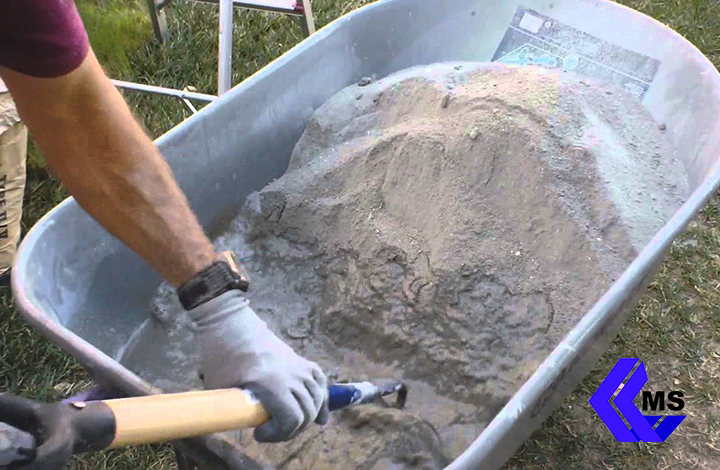
Dry ready-mix concrete or more ready-mix concrete?
Basically, it is difficult and seems wrong to make a difference and distinction between these two types of concrete. In principle, the origin of these two types of concrete is the same and they are produced from the same raw materials; However, according to the customer’s order and the project conditions, the concrete may be made dry or wet. Although in some projects a specific type of these concretes is ordered, it cannot be considered as a reason for the superiority of that type of concrete and it is recommended that the type of ready-mix concrete be selected according to the construction project.
For example, if a project is in harsh weather conditions, or the concrete pouring project may take a long time, or you need a small volume of concrete, it is better to use dry ready-mix concrete and thereby reduce your trouble. However, if you are busy concreting the foundation or roof of a large project and you expect the volume of work to be high, it is recommended to use more ready-mix concrete and ask the concrete factory to produce the concrete according to your needs.
What is the difference between dry concrete and prefabricated structures?
One of the mistakes that occurs in the definition of dry concrete and prefabricated structures is that in many sources they define the two in the same way and in fact they mean dry concrete as dried concrete. Prefabricated structures or dried concrete are projects that are entrusted by some large companies to a ready-mix concrete production plant, and after producing that structure, the plant provides it to the contractor in a completed form. This is while dry ready-mix concrete is completely different from this issue and has little to do with dried concrete.
Dry ready-mix concrete or prefabricated structures are used in very large projects such as water resources, electricity, highways, ports, bridges, airports, large prefabricated product factories and commercial concretes, and although it requires a large volume of concrete, it must also be of good quality. But dry ready-mix concrete is available in different volumes, and some companies even offer this product in 50-kilogram bags, so that a person can easily use it for home use. Another difference between dry ready-mix concrete and dried concrete is that in prefabricated structures, the concrete is already completely made and then dried under certain conditions after being injected into the mold. While dry concrete is not yet completely made and can be called an incomplete product that requires water.






